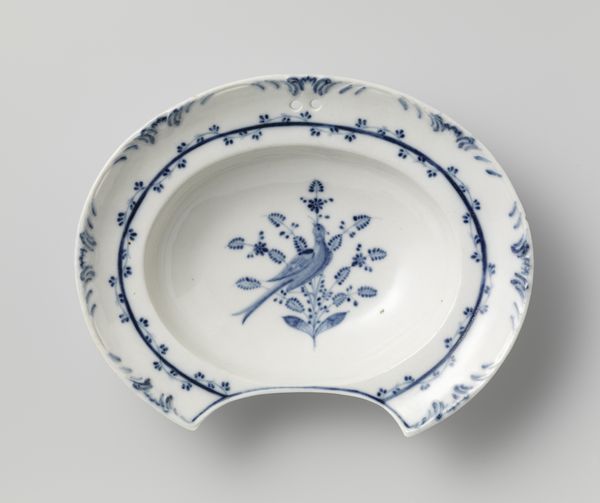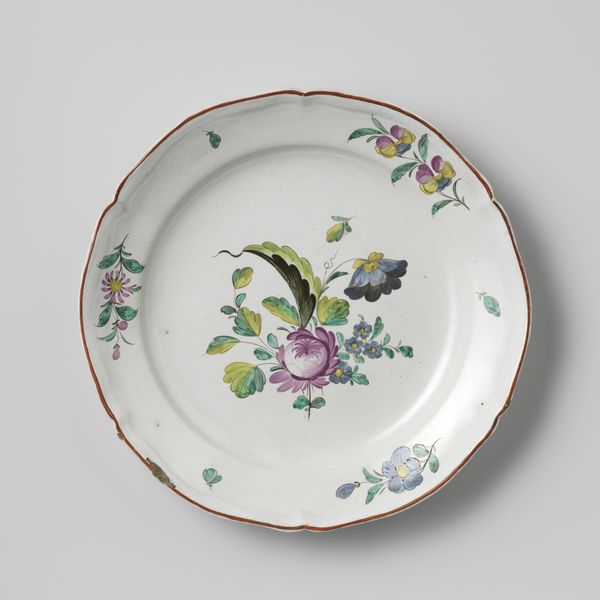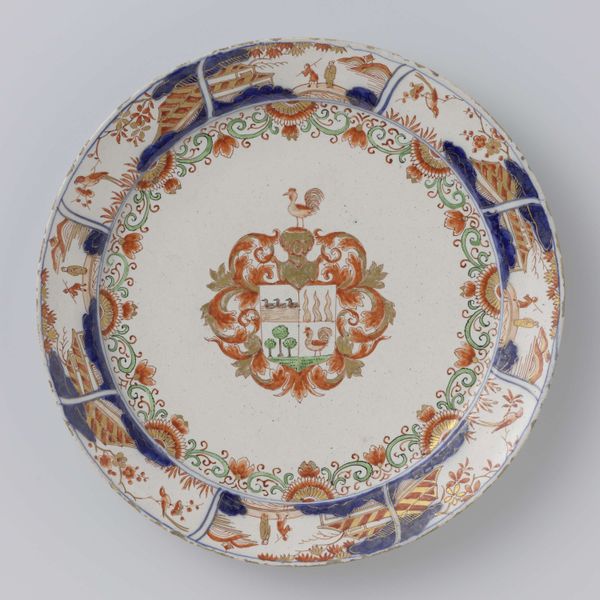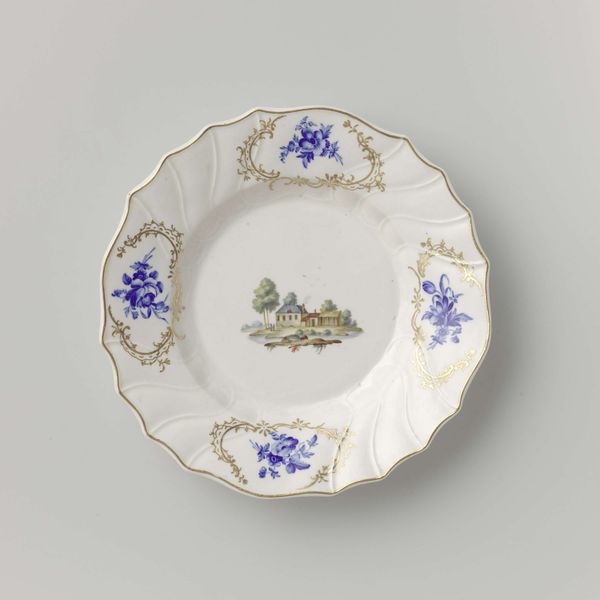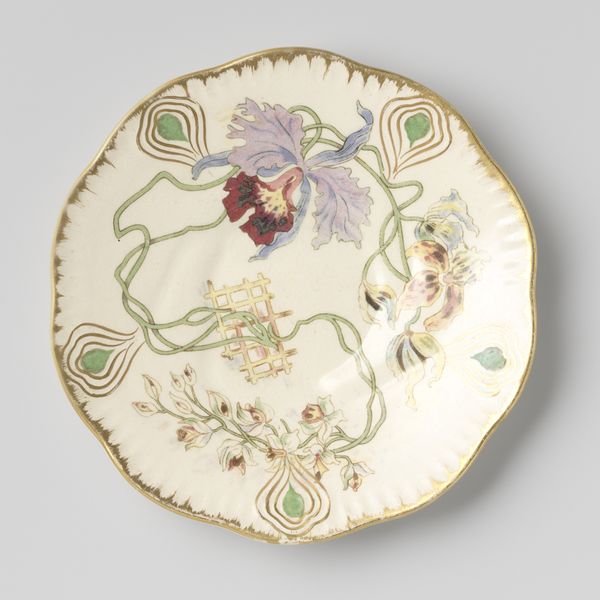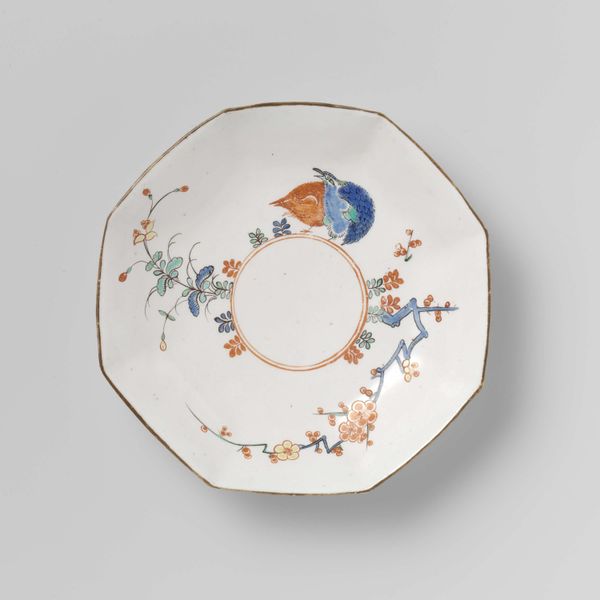
ceramic, earthenware
#
art-nouveau
#
ceramic
#
earthenware
#
stoneware
#
ceramic
#
decorative-art
Dimensions: height 2.5 cm, diameter 22.1 cm
Copyright: Rijks Museum: Open Domain
Curator: Here we have an earthenware plate, crafted at the Arnhemsche Fayencefabriek between 1910 and 1915. It's decorated with an Art Nouveau-style butterfly motif. Editor: It strikes me as so delicate. The creamy glaze coupled with those sinuous blue lines creates an airy, almost ephemeral feel. It's as though the butterfly might flutter right off the plate. Curator: Indeed, the composition emphasizes the two-dimensionality of the surface. Note how the butterfly is stylized, flattened. It adheres to the visual logic of the plate rather than attempting realism. Also, the glaze itself almost appears to 'pool' around the design making the blue outlines look almost embedded within the piece. Editor: I'm curious about the materiality here. Earthenware suggests a common, everyday object. It seems interesting that it has been elevated with an elegant, almost aristocratic design of this nature. What does that tell us about craft versus fine art at the time, and access to decorative domestic items? Curator: It raises crucial questions about the hierarchy of art forms. The application of the Art Nouveau aesthetic, characterized by organic lines and naturalistic motifs, onto a mass-produced object disrupts traditional boundaries. This disrupts notions of "high" and "low" art that have been so rigidly prescribed. Editor: Absolutely, and it's clear that considerable handwork went into the execution here – this piece wasn't simply stamped out of a mold, so can you talk about the process, skill and labor it took to apply that enamel in that style at scale? Curator: We are led to an appreciation for the craft. Its visual vocabulary clearly draws from, and mimics that of so-called finer art. However it uses materiality to bridge societal and socioeconomic chasms; making 'high' art more available. Editor: Thinking about the purpose of such an item, this decorative ware suggests a societal interest in everyday beauty during that time. It moves past functional ceramics, but clearly has not ventured as far as something overtly artistic, making it perhaps a mid point. Curator: Exactly. It acts as a nexus, merging the domestic, the artistic, and the commercial, reflecting the aesthetic sensibilities of a rapidly changing era. Editor: I'm struck again by the fact this all started as mere earth—simple earthenware. To think about the metamorphosis of earth and raw material into this aesthetically pleasing object gives me a feeling of accomplishment. Curator: A worthy final point and a summation on this convergence of art, design, and industry during the early 20th century.
Comments
No comments
Be the first to comment and join the conversation on the ultimate creative platform.




